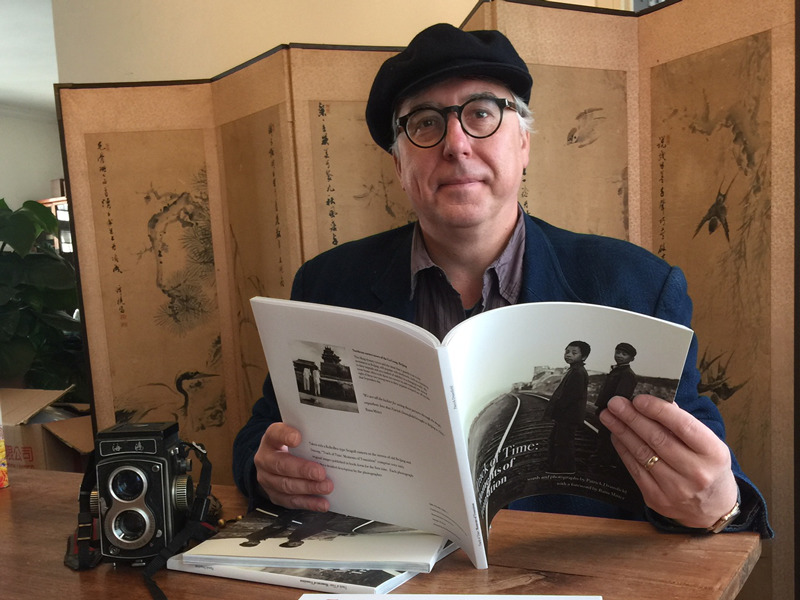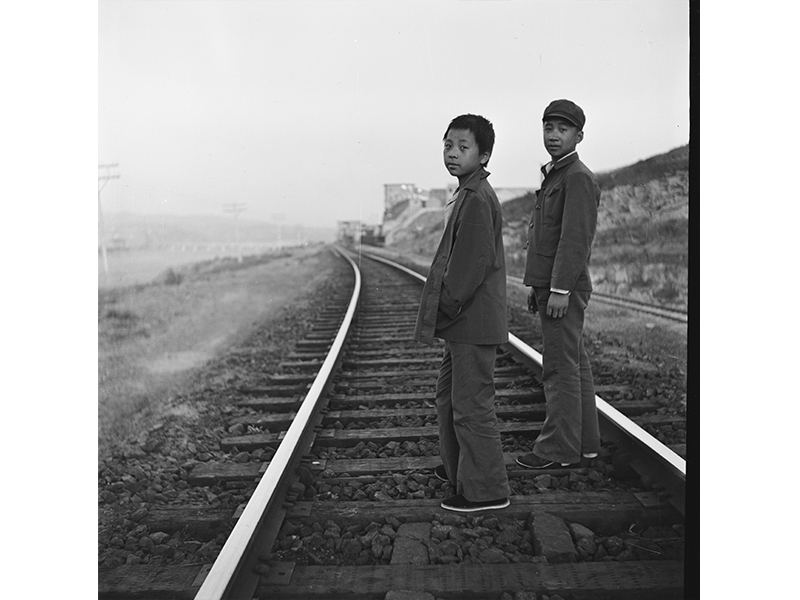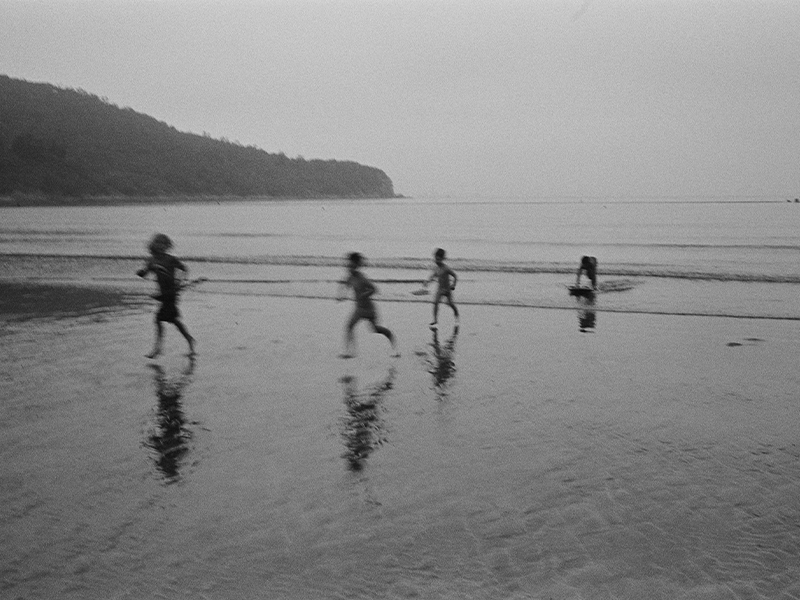Lovers of photography – and particularly black-and-white photos that tell a story of a bygone time – will likely be enthralled by Track of Time: Moments of Transition, a new book by Patrick Dransfield.
In January 2020, the long-term resident of Hong Kong stumbled upon hundreds of photos that he’d taken 34 years earlier on the streets of old Beijing and Datong in China. Now, 60 of the original images from that summer of 1986 have been published in a book, available through Bookazine.
We spoke with Patrick about his background, the photos from the book, and how cameras and photography have changed in the ensuing years.

Where are you from originally? Anything you miss about it?
The UK. My parents were from Yorkshire and retired to the Clwyd Valley in North Wales. I miss them – and the hills!
Your new book features images taken in 1986 after you moved to Beijing; what took you there? Was photography just a hobby at the time?
I studied Art History (and English) at Leeds University and it is through friends in the Chinese Language Department that I ended up in China – that and a photo of my dad smoking a pipe and reading with the Shanghai Bund as a backdrop (taken in 1946). I had been taking photos since I was fifteen and studying the fine art masters from the age of eight.
Were there many foreigners taking photos in Beijing in 1986? How did locals react to what you were doing?
Most famous of the photographers of the time was Adrian Bradshaw. I was taking street photos of ordinary Beijing life and ordinary citizens as I was living with a Chinese family at the time. Because my photography style is non-confrontational, the Beijing people responded very well to this tall, blond-haired foreigner with his ‘five-year-old Putong Hua’.
What are some of your strongest memories of China at that time?
Bright sunshine, yoghurt and small bananas for breakfast and the joy of living in a place where every day was different and there was always something new to discover.
Give us the background to one or two photos in the book, how you came to take those photos, and the stories they tell.
Datong Boys
For me the photograph “Datong Boys, Summer 1986’ which is our cover photograph expresses a moment of liminality. Taken from across the desolate basin of the Shi Li river directly facing the Yungang Buddhist caves, the boys stand between child and adulthood. China itself in the hot summer of 1986 was at a liminal moment. The year was a very positive time to be in China: Deng Xiaoping was in power and his deputy Zhao Ziyang began enthusiastically implementing the ‘Open Door Policy’ to encourage foreign investment. Even the most brutalized Chinese intellectual believed that their lives would never again be subjected to the chaos of the Cultural Revolution (1966 – 1976). The future trajectory for China could only be up.
North East Corner tower of the Gu Gong, Beijing,
This Ming dynasty tower and the moat that it guards is an iconic monument in Beijing, still popular with newlyweds, both as a backdrop to their nuptials and as a symbol of stability in a changing world. My route home often took these two towers in and evidently the surreal sight of these two young men in their pyjamas tempted me off my bike that September day.
What kind of camera were you using in 1986, and how different was the whole process of photography to now?
I was using a second hand Rolleiflex copy camera called a Seagull, made in Shanghai in China – a wonderful companion as one holds the camera at chest height and that meant that I could engage on a human level with my many subjects. I had no light metre but the images are surprisingly sharp and clear. Today: apart from my iPhone? I use a Leica M2 (it dates from 1965 – my wife Carmen’s birth year!) and I recently repaired my Seagull Camera (last used in Beijing 1986). It is proving tricky to use even with a hand held light metre but still yields great results.
What gave you the idea of publishing this book now?
A convergence of happenstance – finding over 70 tightly rolled negatives (around 800 pictures) from China 1986 in our flat in January 2020; Carsten Schael’s invitation on behalf of Hong Kong’s Foreign Correspondents’ Club (FCC) to host the Wall Exhibition ‘Tracks of Time: Moments of Transition’ in October; the voluntary liquidation of our Asia events company due to COVID-19 in November; and the encouragement of Carmen and friends and family.
*When did you first come to Hong Kong? What brought you here?
We arrived with our eldest son Liam (then 6 months old) in Spring 1996. I was offered a job in publishing here by Euromoney / Institutional Investor.
Do you call Hong Kong “home”?
Yes. I think particularly of one spot in Ham Tin, South Lantau as my ‘Carlos Castaneda Spot’ but exactly where that is, I must keep secret!
If you still take photos, do you use more traditional cameras and equipment, or have you gone fully digital?
I am not technically minded so – apart from my iPhone and a handy Fuji Colour Camera – I am still inspired by my old Leica. I also use a Japanese Widelux and the Seagull and a Voiglander camera from the 1950s as occasion demands.
Do you have a favourite photographer or particular photo?
The late Bill Brandt – his portrait of the poet Dylan Thomas and wife Caitlin across their kitchen table speaks volumes.
What do you like to photograph in Hong Kong?
The Hong Kong International Arbitration Centre on 38th floor 2 Exchange Square hosts 10 photos of Hong Kong by me and at least four of them are of Lantau – I find Pui O beach at dusk especially inspiring as the dark, volcanic sand and the thin surf becomes a mirror providing a perfection reflection: a gift for a photographer inspired by fine art such as me as it is easy to conjure surreal images from such happy natural circumstances. It is also 5 minutes from our flat!
Available in all Bookazine shops and online at bookazine.com.hk.
Love books? Head here for more recommendations.







